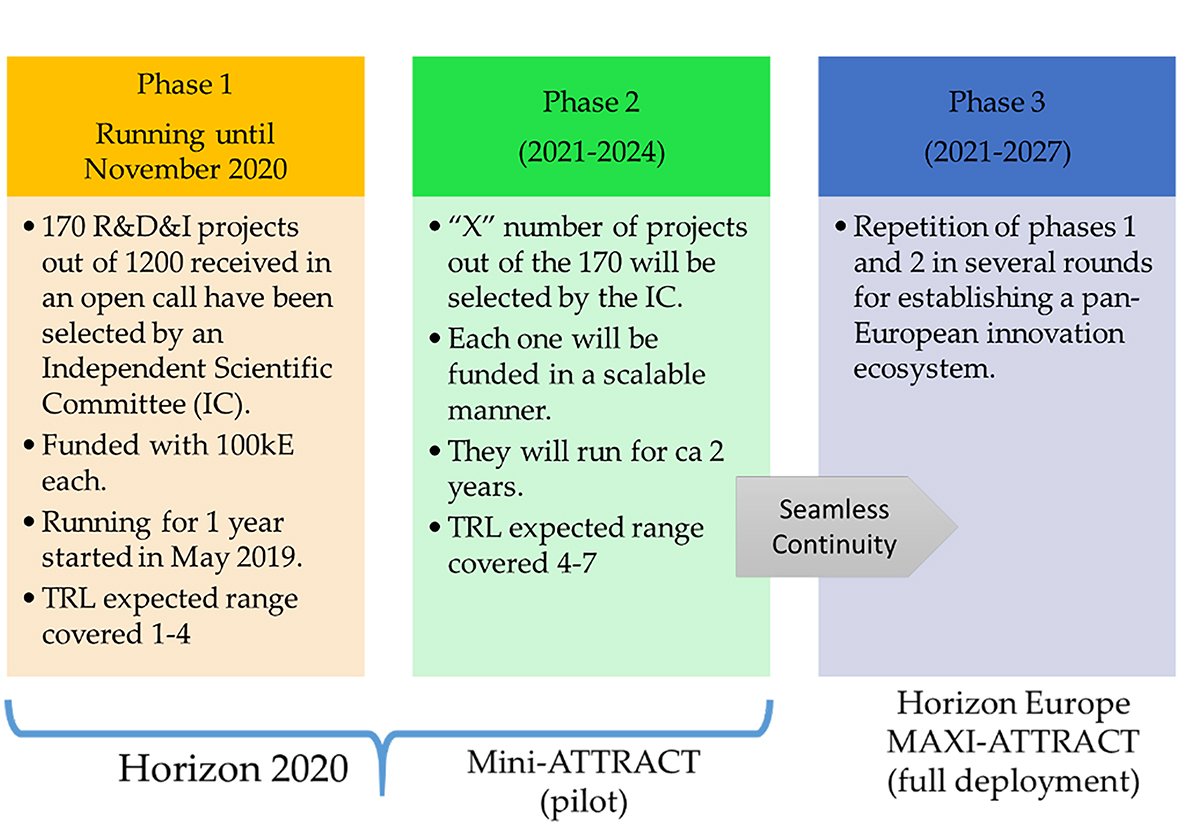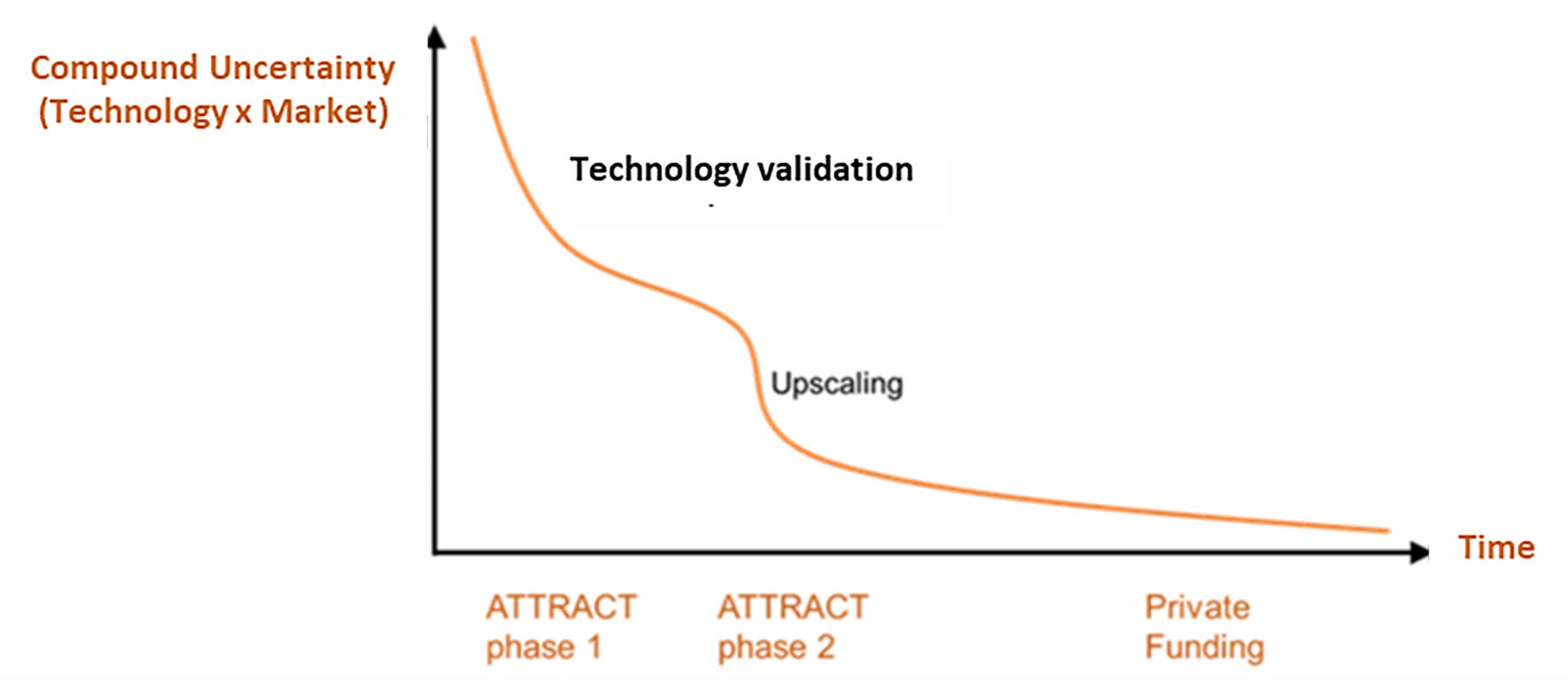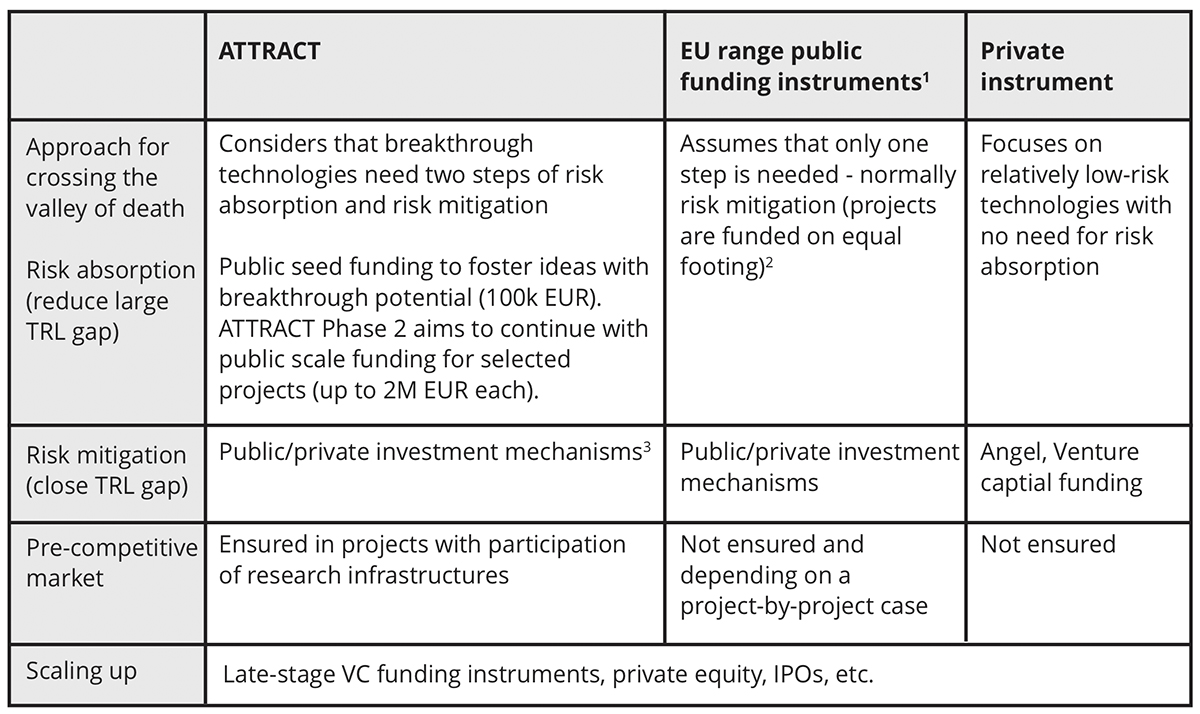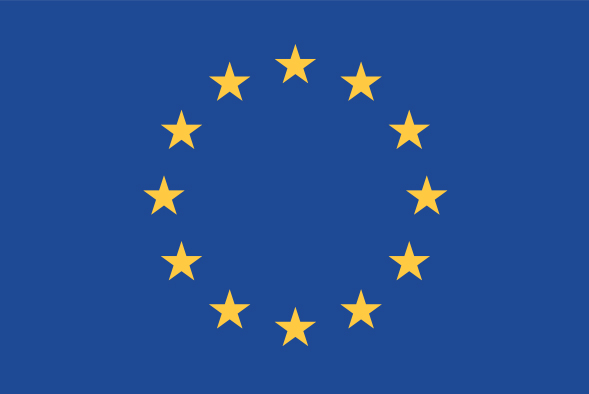Here Professor Sergio Bertolucci, Chair of the ATTRACT R&D&I Committee (IC) continues to discuss the development of Horizon 2020 funded innovation programme ATTRACT
The ATTRACT Programme, (referred to as ATTRACT from now on) is an initiative enabling the transition of technology generated mainly for fund-amental research purposes towards industrial and societal applications and excluding any technologies for military objectives. As a funding instrument, it has been conceived following a staged approach depicted in Figure 1 below. (1)

The strategic philosophy behind this funding structure has been the use of European grant-based funding sources (e.g., H2020) to absorb the financial risk that private investors incur to commercialise breakthrough technology developed for fundamental science purposes. They are normally more prone to assume the risks associated with technologies closer to the market. (2) In other words, the technology developed in the scientific research realm represents too much of a risk when contemplated with the eyes of the immediate return of investment (see Figure 2). Nevertheless, it has the capacity and potential of profoundly transforming technological sectors as well as society at large especially in particular if it is co-developed with industrial organisations from the very low TRLs onwards as is the case of ATTRACT.

From an operational point of view, this phase-based approach (Phases 1 and 2 implemented in sequence) gears the following advantages with respect to how European funding grants currently operate (Figure 2).
The main advantages are:
- It allows bottom-up scouting and funding a larger number of potentially breakthrough ideas in a seed manner (100 k Euros in Phase 1) and giving them a reasonable time (12 months) for demonstrating their feasibility and breakthrough potential at a conceptual or prototype level.
- It allows a checkpoint (Phase 2) for the identification, scaling up, and streamlining of funding for the most promising opportunities resulting from Phase 1.
- Consequently, it establishes a mechanism for identifying early-stage, promising opportunities. It fosters them with the potential for alternative funding (e.g., national and/or regional funding) until reaching adequate maturity and “de-risking” for private investment to step in.
These three characteristics, in the view of the ATTRACT committees, constitute an interesting “funding experiment” worth implementing within the framework of European funding programmes.
The European Commission (EC) has also given its full support to ATTRACT (Phases 1 and 2) within the H2020 Programme. Moreover, the structure of novel funding instruments such as the European Innovation Council (EIC) is advancing in this direction. It should be noted that similar kinds of funding constructions have been successfully implemented elsewhere (e.g., DARPA), especially for the case of visionary and/or breakthrough technologies. (3) A high-level operational comparison between ATTRACT and different funding sources is summarised in Figure 3.
Although the original ATTRACT operational funding philosophy has been conceived by leveraging on grant-based European funding programmes, three observations should be made related to its potential future development:
- The flexibility of the ATTRACT funding model allows its transferability to national or regional funding schemes.
- There is a strong and reinvigorated interest from the private investment world in the so-called “deep tech” sector. Deep tech is defined as the type of technology rooted in substantial scientific advances and high-tech engineering innovation. It requires lengthy R&D, which may take a long time to reach commercial application, and often requires large investments to achieve commercial success. (4) New European funding instruments like the EIC have expressed a potential interest in integrating ATTRACT within its structure given the parallelisms of scope (breakthrough technology) and funding structure (phase approach).

1. We are referring to EU funding programmes such as Horizon 2020. We do not consider national public funding programmes.
2. Exceptions exist such as the SME instrument https://ec.europa.eu/programmes/horizon2020/en/h2020-section/smeinstrument. Nevertheless, they differ from ATTRACT because a project needs to apply for seed funding, and subsequently, for scale funding. In ATTRACT the transition between seed and scale is streamlined.
3. http://www.eif.org/: http//eib.org/en/index/htm
The current article sets the scene for a further elaboration, which we intend to continue in the next issues of Open Access Government by analysing the necessary elements in relation to these observations. This includes considering the following:
- What key elements would be necessary to consider for integrating ATTRACT in a sustainable manner into the EIC?
- What key elements would be necessary for transferring the ATTRACT funding model to grant-based national funding schemes?
- How could ATTRACT in both cases create entry points for public and private investment?
To address these three questions above, we will focus on aspects of governance integration as well as outline potential entry points for private investment. Some key aspects of the funding operational dynamics will be discussed as well.
We are looking forward to wide and open participation in this discussion, which in our opinion might significantly contribute to the establishment of a European Innovation Ecosystem.
References
- For a detailed description see http://itemsweb.esade.edu/research/iik/ATTRACT-Strategic%20Programme-Summary.pdf and OAG July 2021 Pg 322
- See for example Messica, Avi, Valuation of High-Risk High-Technology Ventures (October 4, 2006). Available at SSRN: https://ssrn.com/abstract=934774 or http://dx.doi.org/10.2139/ssrn.934774
- William Boone Bonvillian, Richard Van Atta, Patrick Windham, The DARPA Model for Transformative Technologies, Open Book Publishers, 2020.
- “What is Deep Tech?”. TechWorks. Retrieved 2019-01-12; Arnaud de la Tour, Massimo Portincaso, Kyle Blank, Nicolas Goeldel. “The Dawn of the Deep Tech Ecosystem”. The Boston Consulting Group.

ATTRACT has received funding from the European Union’s HORIZON 2020 Research programme under the Grant Agreement no. 777222.
Please note: This is a commercial profile
© 2019. This work is licensed under a CC BY 4.0 license.











